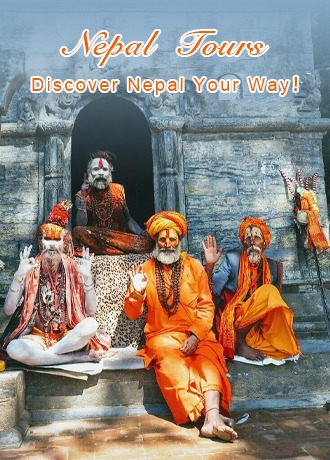Top 10 Tourist Places to Visit in Nepal
- Last Updated: 2024-01-10
Nepal is located in southern Asia, at the southern foot of the middle section of the Himalayas, bordering China’s Tibet Autonomous Region to the north, surrounded by India in the east, west, and south. There are 14 peaks in the world with an altitude of over 8,000 meters, 8 of them located in Nepal, therefore Nepal has the reputation as the "Kingdom of Snow Mountains". Nepal is located at the intersection of Asian civilizations and it's a country with a very developed tourism industry. Hinduism, Buddhism, ancient palace buildings and colorful natural resources constitute the unique tourism resources of the local area. It is one of the most suitable countries for hiking in the world. Here is an inventory of the top ten tourist places to visit in Nepal.
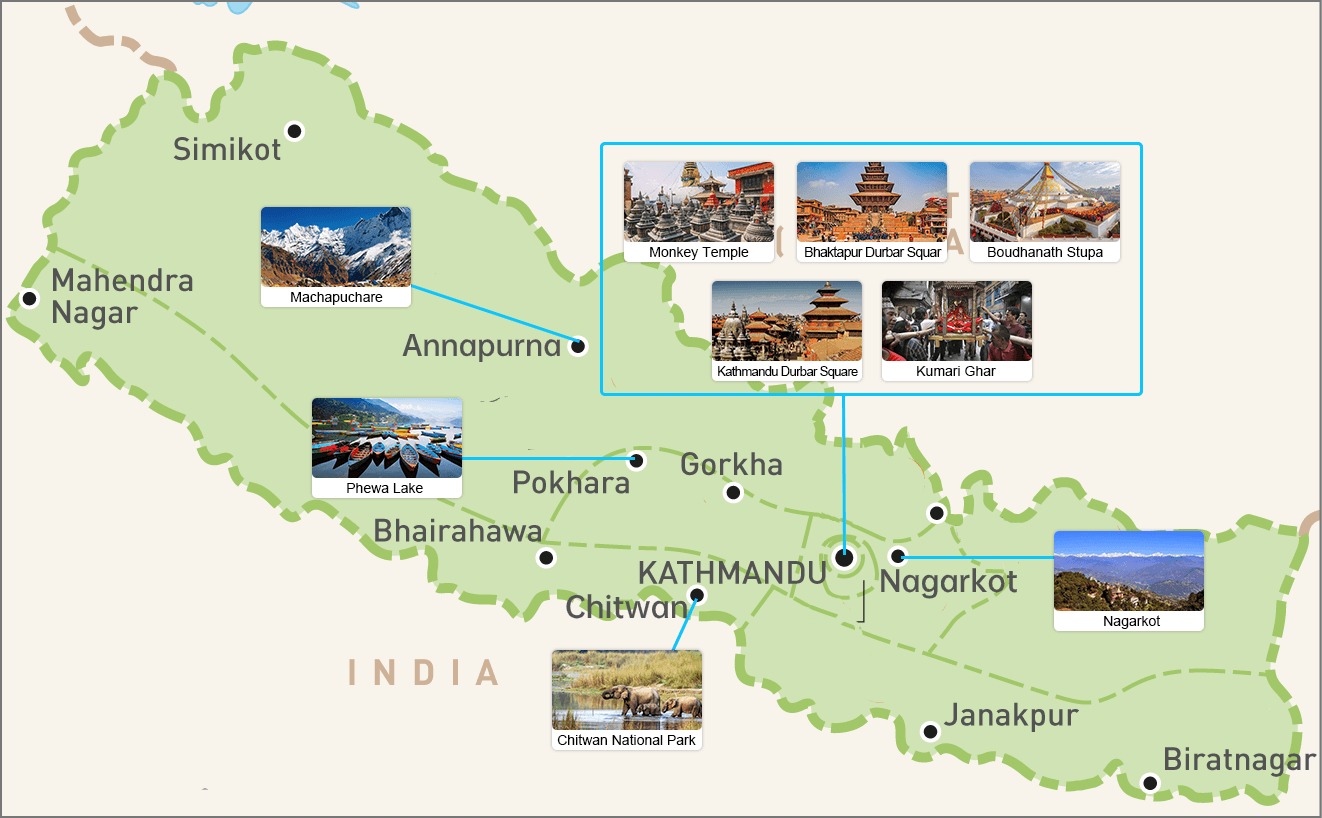
Kathmandu Durbar Square
Durbar Square is located in the central area of Kathmandu and is one of the most famous sights in Kathmandu. The numerous monuments, buildings, exquisite carvings and mysterious temples make people linger and feel the rich flavor of the history of Nepal. However, the whizzing motorcycles, selling hawkers, silhouettes of resting people, as well as the kids playing football, the crowded pigeons, cows, sheep, dogs, cats and dogs, etc., make Durbar Square as busy as a bazaar. The bustling marketplace and mysterious temples have formed a strong visual impact. >>See more about Kathmandu Durbar Square
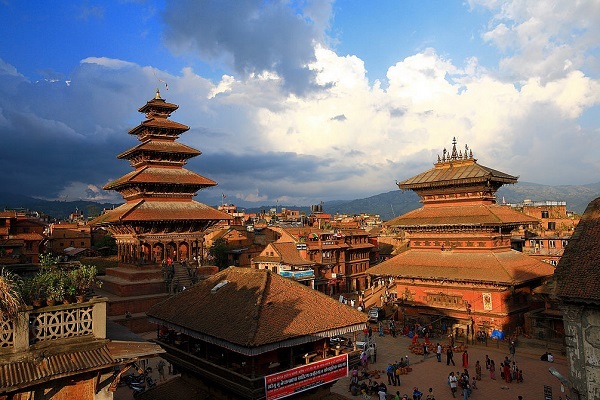
Monkey Temple
The full name of Monkey Temple is Swayambhunath Stupa, located west of Kathmandu. With a history of more than 2500 years, it is the oldest Buddhist temple in Nepal and is listed as a UNESCO World Heritage Site. According to legend, Sakyamuni once visited this place. There are many monkeys here, and they are not afraid of strangers, so it is named Monkey Temple. After reaching the top, you can overlook the entire Kathmandu Valley. Don't forget to stand on the top of the mountain and take an intimate photo with Kathmandu! A grand puja is held here every year on the Buddha's birthday, and there will be crowds of people and lively activities. >>See more about Monkey Temple
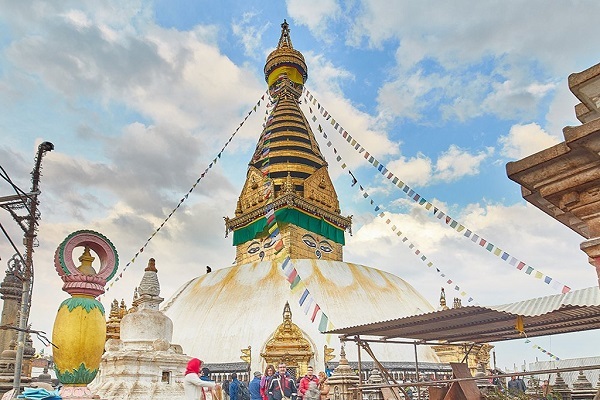
Chitwan National Park
Chitwan National Park is called "Chitwan Royal National Park". It is located in a preserved area in the Terai Lowlands of southern Nepal. It is one of the few unspoiled natural areas in the Himalayan hills between India and Nepal. It's also the habitat of the Asian one-horned rhinoceros, which is rare in the world, and one of the last hiding places for the Bengal tigers. In the park, there are verdant bamboo forests, towering Sal trees, kapok trees, and crimson flower ferns, which enjoy the reputation of "Forest Flame". It was once the private hunting territory for royal Nepalese and their distinguished guests. In 1973, it was listed as a UNESCO World Heritage Site.
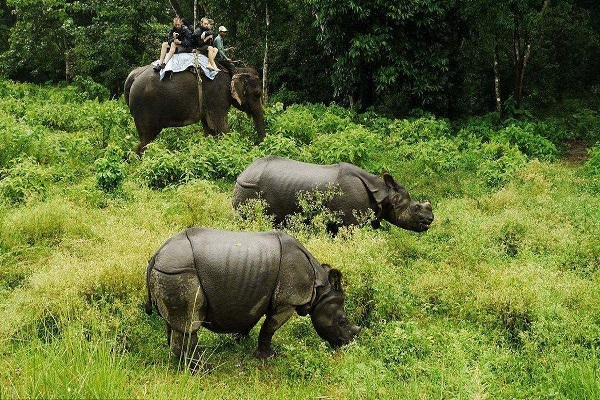
Pashupatinath Temple
Pashupatinath Temple was built in the 19th century. It is one of the most important Hindu temples in Kathmandu and the largest Hindu temple in Nepal. It is also one of the four major temples dedicated to Lord Shiva in South Asia and has been included in the World Cultural Heritage List. Non-Hindus cannot enter the main hall. Pashu means "all beings" and Pati means "lord". Pashupatinath Temple is the beginning and end of life for Nepalese, and is also known as the "Temple of Burning Corpse". There are six stone cremation platforms by the Bagmati River outside the Temple, where Nepalese Hindus hold open-air cremations. Moreover, it has been the worship place for ascetics. >>See more about Pashupatinath Temple
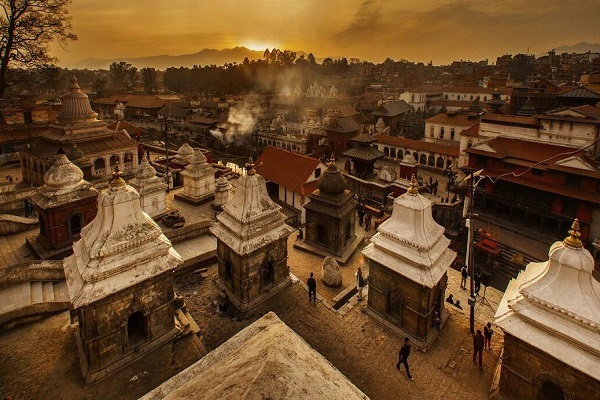
Phewa Lake
Phewa Lake is located on the lakeside of Pokhara, a city in central Nepal, and a famous royal resort in Nepal. The majestic Annapurna peaks constitute the natural background of Fewa Lake, and the charming lake and mountains attract a large number of tourists every year. The royal palace is located on the south bank of the lake. The middle lakeside area at the intersection of the palace on the north bank and the campsite is the center of the entire scenic area. Hotels, restaurants and shopping are filled with the main street on the lakeside. No matter when and from any angle, Fewa Lake has its own style. The Fewa Lake in the dusk is especially favored by photographers. In the evening, the returning birds dance in the changing light and shadow. You may rent a brightly colored small sailboat on the lake and quietly appreciate the lake and mountains reflected in the water, which is very popular among backpackers.
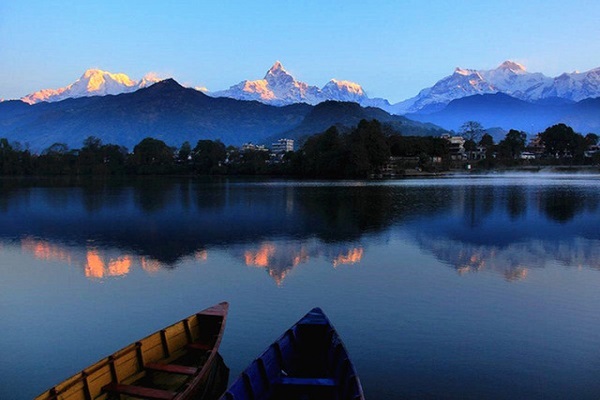
Bhaktapur Durbar Square
Bhaktapur Durbar Square lies in the center of Bhaktapur, southeast of Kathmandu. Bhaktapur was called Bhadgaon in ancient times, which means "City of Rice" or "City of Pious People" in Nepali, known as a showcase for town life in medieval Nepal. It is said that Bhaktapur had 172 temples in its heyday. The historical sites of Bhaktapur are mainly concentrated in three squares, among which Durbar Square is the most beautiful and famous one. It's surrounded by various pagodas and temples, known as the "open-air museum". But after a severe earthquake in 2015, many ancient buildings here were severely damaged. >>See more about Bhaktapur Durbar Square
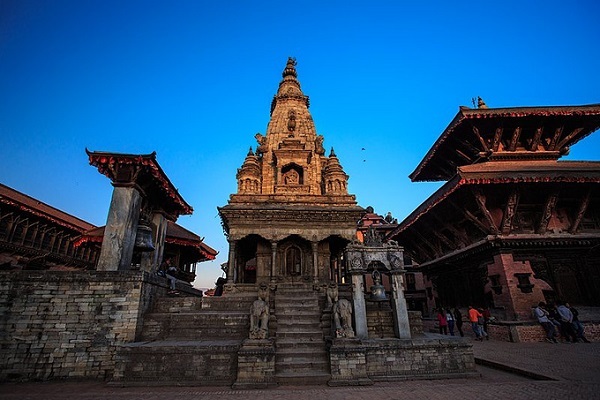
Boudhanath Stupa
Boudha Stupa is located on the ancient trade road between Tibet and Nepal. It is the largest round stupa in the world and one of the world's cultural heritage. The stupa was first built in the Songtsen Gampo period. The white-covered bowl-shaped pagoda has huge Buddha eyes on all sides, meaning that the Dharma is boundless and omnipresent. The tower, dome, square tower, minaret and canopy respectively symbolize the five parts of the world - earth, water, fire, air, and air. The 13 steps on the minaret symbolize the 13 stages leading to Nirvana. There are fine religious decorations here, which are worth spending some time to feel. >>See more about Boudha Stupa
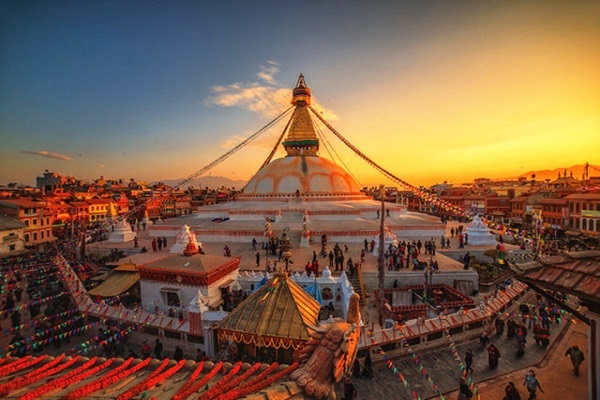
Machapuchare
Machapuchare is a branch of the Annapurna Mountains, named for its fishtail-like peak. It has always been regarded as the sacred mountain of Nepal. In the hearts of Nepalese people, Machapuchare is extremely holy, which is equal to Mount Kailash in Tibet, thus it's prohibited to climb. You can appreciate the magnificent scenery of Machapuchare from Phewa Lake, or hike in the Annapurna for a closer look, where sunrise and sunset are both particularly beautiful.
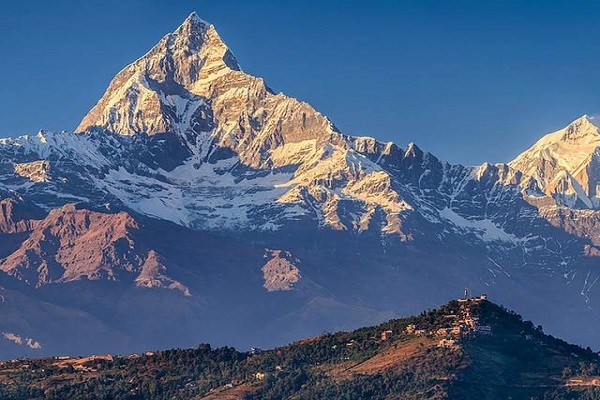
Nagarkot
Nagarkot is the fringe area of the Kathmandu Valley. It is more than 2,100 meters above sea level and on a ridge facing the Himalayas, therefore it's called "Himalayas Viewing Platform". Here you can enjoy a panoramic view of the Himalayas. If the visibility is high, you can even see Mount Everest, the highest peak in the world. From Mount Everest on the east side to Annapurna on the west side, the landscape of snow-capped mountains lined up is quite shocking.
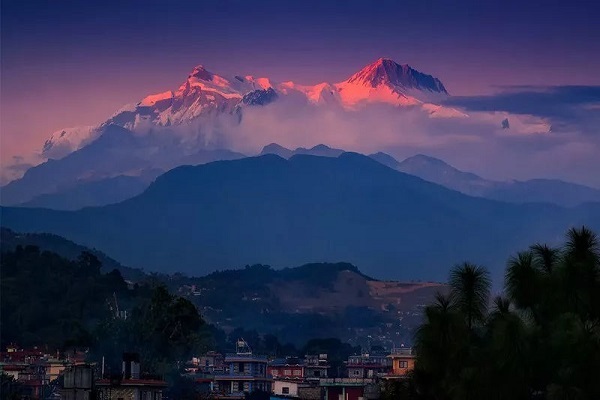
Kumari Ghar
Kumari Ghar, also named the Temple of Living Goddess, is settled in Durbar Square, Kathmandu. It is a three-story Buddhist temple building. Although the building is not beautiful, it has attracted much attention because of the living goddess Kumari in Nepal. In Nepali, “Kumari” means “Virgin” and is also called the Living Goddess. It's carefully selected from ordinary girls in Nepal. The young girl selected as "Kumari" was sent to the temple for worship at the age of three or four until adolescence. At a fixed time every day, the goddess Kumari will appear in the window of her boudoir for visitors to get a glimpse. For hundreds of years, Goddess Kumari came from civilian families and returned to the folk after retirement.
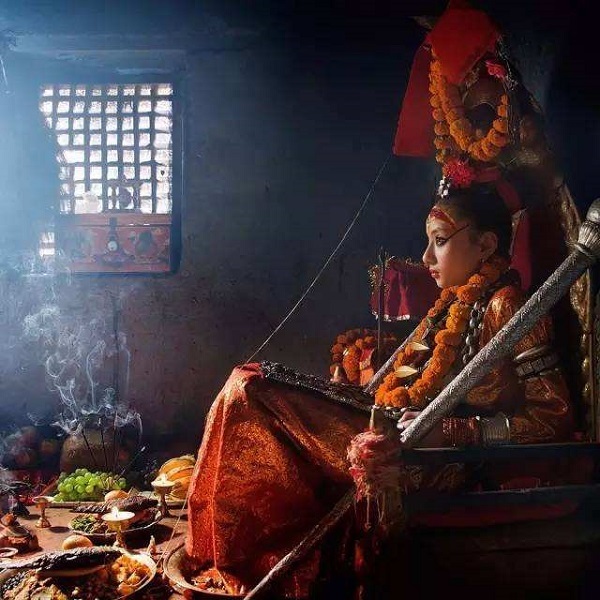
Related Articles
-
Where is Nepal Located?
Located on the southern slopes of the Himalayans, Nepal is a landlocked country in South Asia, in eastern Eurasia, and on the west coast of the Pacific Ocean. -
Nepal Tibet Map
Nepal and Tibet are located on the south and north side of the Himalayas. Here're practical travel maps of the world's two top tourist destinations. -
Nepal Bhutan Tibet Tour Tips
Nepal Bhutan Tibet tour is a transnational journey. Before this special tour, travelers need to know some tips about permits and visas and attractions. -
How to Plan a Nepal Tibet Bhutan Tour?
Here are some tips for planning a wonderful Nepal Tibet Bhutan tour including regional overviews, required permits and visas, travel routes... -
Lukla: World's Most Dangerous Airport and Gateway to Mt.Everest
Lukla Airport(Tenzing-Hillary Airport) is located in Lukla in eastern Nepal. It is the only gateway from Kathmandu to Mount Everest. -
Grand Festivals and Holidays of Nepal
Festivals of Nepal are an important part of Nepalese traditional culture. Most Nepali festivals originate from the worship of various gods. -
Dashain Festival in Nepal
Dashain is the largest and longest festival in Nepal. It means tenth in Nepali. It is to commemorate the victory of Goddess Durga over Buffalo demon. -
Tihar in Nepal
Tihar, also known as Deepawali or Diwali, is the most beautiful festival in Nepal for driving away darkness with light and defeating evil with goodness. -
Hartalika Teej Festival
Hartalika Teej is a traditional festival celebrated by Hindu women. During the festival, married women would fast and pray for longevity for their husbands. -
Things to Know Before Visiting Nepal
Before you visit Nepal, it is necessary to know some Nepal travel tips including how to get to Nepal, cuisines, things to do, best time to go, etc.
Email response within 0.5~24 hours.


